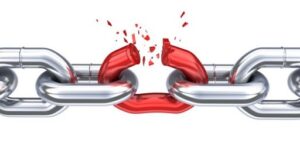An efficient supply chain includes a lot of moving parts. From planning and production to housing inventory and transporting goods, there are various processes that need regular management to keep it running smoothly.
Unfortunately, a complication at any point in the supply chain can have a damaging ripple effect. From a spiked seltzer scarcity to KFC’s fried chicken shortage, take a look at four instances when supply chains failed to deliver, with some lessons you can learn from them.
Spiked seltzer shortage
Spiked seltzer has become a billion-dollar industry, and White Claw is leading it. The brand has recently seen exponential growth, with sales up 250 percent year over year. While this kind of demand is often desirable, it turns out there can be too much of a good thing. In 2019, the company couldn’t produce and ship enough spiked seltzer to meet demand.
As a result, White Claw instituted a transportation, distribution, and logistics policy called allocation. This practice involves intentionally limiting supply to make sure that all markets receive regular shipments, even if supply runs out quickly. Allocation also means that White Claw isn’t increasing the volume of shipments to stores that sell out faster. While the company works to fortify its supply chain, this strategy allows them to continue reaching all their markets, if at a reduced rate.
The Takeaway: White Claw’s rapid rise reveals how important it is for companies to have the supply chain infrastructure in order to scale. This includes systems and a strategy to predict and forecast demand to proactively meet customer needs.
KFC runs out of chicken
In 2018, closed more than half of the company’s 900 U.K. restaurants closed due to their supply chain crisis. KFC had shifted to a new delivery partner, causing major disruptions to their food supply chain. Without deliveries of chicken, many of the stores were forced to close.
The Takeaway: Snags are inevitable, but mitigating losses needs to be a top concern for the business. Running pilots is a must, and there are even simulation technologies to stress test supply chain operations from a safe digital environment.
Ecommerce inventory management woes leads to canceled orders
Issues with the clothing subscription start-up Rent the Runway began in September 2019, when they installed a new supply chain management software for its warehouse.
Customers were contacted via email warning them that the company could not guarantee that their scheduled orders would arrive on time. Rentals for formal events were canceled, and the company stopped taking new subscribers for about six weeks.
The Takeaway: Despite these setbacks, Rent the Runway remains hopeful that once the bugs have been ironed out, the new inventory management software will enable them to deliver items faster. But the situation is a reminder of the amount of time that goes into proper supply chain risk management.
Target Canada’s misfortune
In 2013, Target opened its first stores in Canada. However, less than two years later, the company announced it would close all of its Canada branches. The combination of an overly ambitious plan paired with insufficient inventory stock, noticeably higher price points, and a lack of Canadian products led to a massive supply chain failure for Target Canada that cost upwards of $2 billion.
The Takeaway: There are no sure things in supply chain. But, if you lay a solid foundation, you are poised to not only meet customer needs, but to pivot when things don’t go as planned. Even the biggest brands need to nail warehouse and inventory management.
How can companies avoid supply chain failures?
As these companies have proven, quality products and creative marketing are key components of success, but in the end, there’s no substitute for a robust and well-executed supply chain. For every cautionary tale there are infinite opportunities to make better connections with your customer base and delight new customers. And the right supply chain management software can position you to jump on opportunities.
Sources:
https://www.linkedin.com/pulse/supply-chain-failures-root-causes-how-avoid-them-taylor-robinson/
https://www.raconteur.net/supply-chain/10-supply-chain-disasters/



